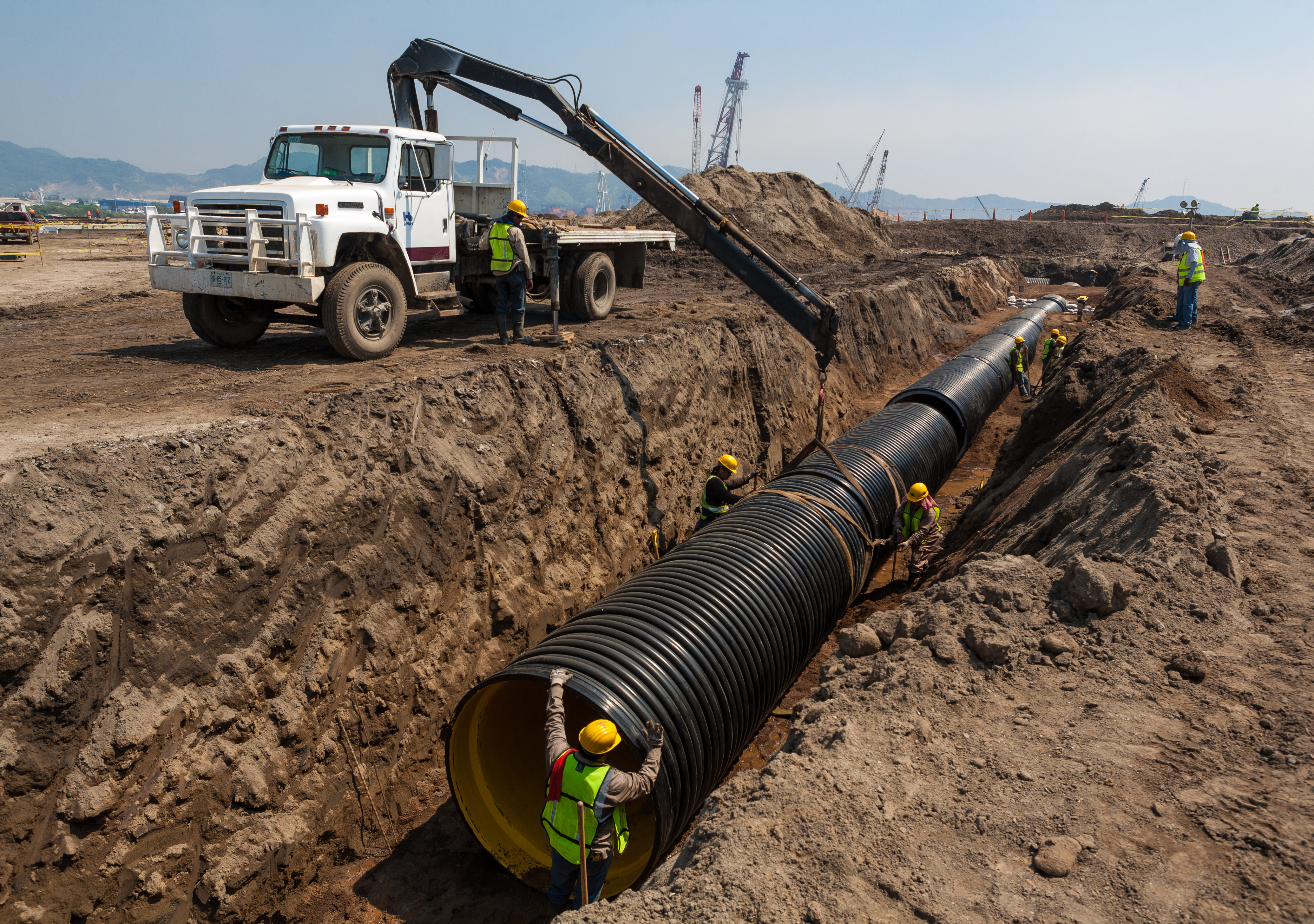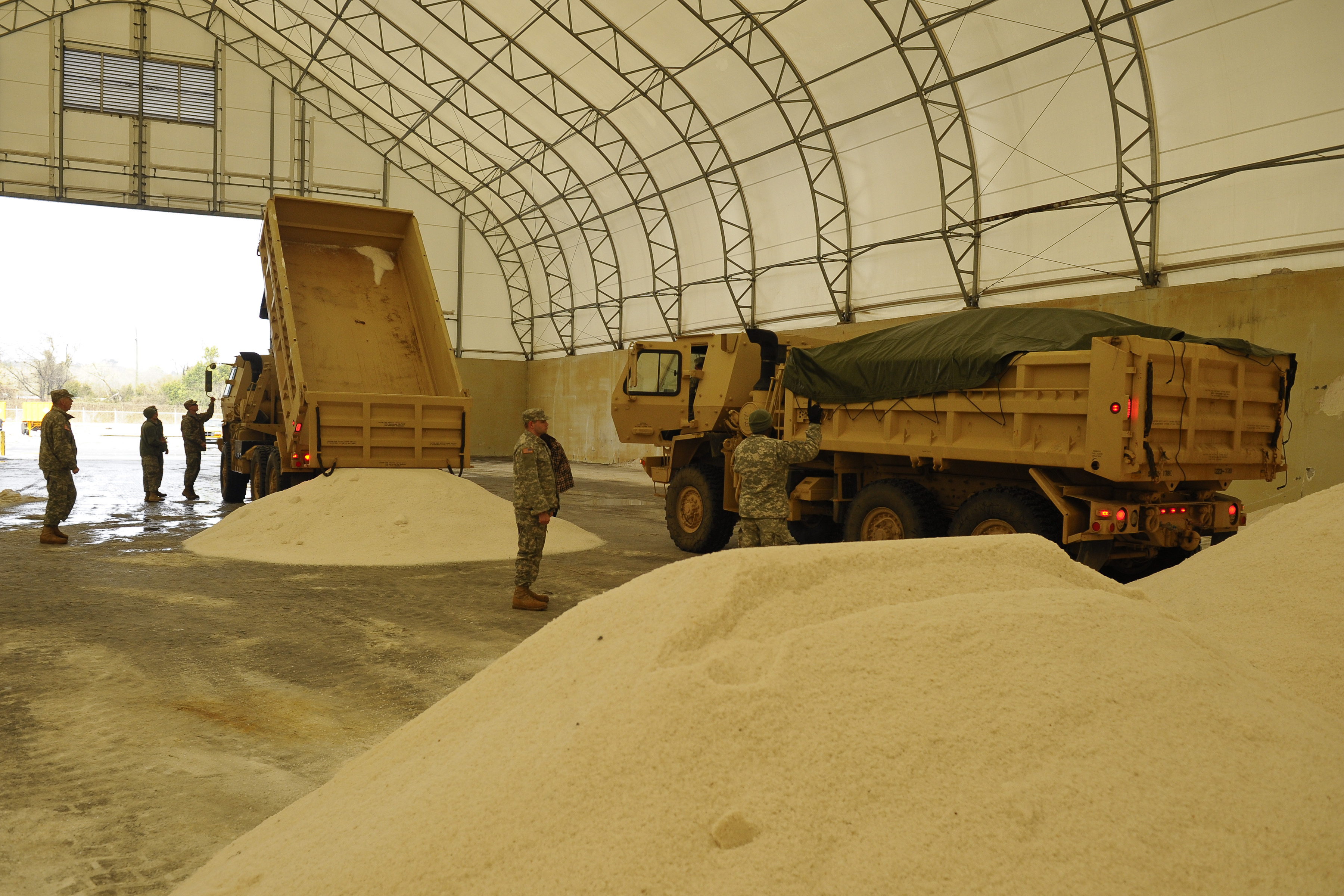|
Waterlogging (agriculture)
Waterlogging water is the saturation of soil with water. Soil may be regarded as waterlogged when it is nearly saturated with water much of the time such that its air phase is restricted and Hypoxia (environmental), anaerobic conditions prevail. In extreme cases of prolonged waterlogging, anaerobiosis occurs, the roots of mesophytes suffer, and the subsurface reducing atmosphere leads to such processes as denitrification, methanogenesis, and the reduction of iron and manganese oxides. All plants, including crop, require Earth's atmosphere, air (specifically, oxygen) to respire, produce energy, and keep their cells alive. In agriculture, waterlogging typically blocks air from getting to the roots. With the exception of rice (''Oryza sativa''), most crops like maize and potato, are therefore highly intolerant to waterlogging. Plant Cell (biology), cells use a variety of signals such the oxygen concentration, plant hormones like ethylene, energy and sugar status to acclimate to ... [...More Info...] [...Related Items...] OR: [Wikipedia] [Google] [Baidu] |
Ethylene
Ethylene (IUPAC name: ethene) is a hydrocarbon which has the formula or . It is a colourless, flammable gas with a faint "sweet and musky" odour when pure. It is the simplest alkene (a hydrocarbon with carbon–carbon bond, carbon–carbon double bonds). Ethylene is widely used in the chemical industry, and its worldwide production (over 150 million tonnes in 2016) exceeds that of any other organic compound. Much of this production goes toward creating polyethylene, which is a widely used plastic containing polymer chains of ethylene units in various chain lengths. Production greenhouse gas emissions, emits greenhouse gases, including methane from feedstock production and carbon dioxide from any non-sustainable energy used. Ethylene is also an important natural plant hormone and is used in agriculture to induce ripening of fruits. The hydrate of ethylene is ethanol. Structure and properties This hydrocarbon has four hydrogen atoms bound to a pair of carbon atoms that are con ... [...More Info...] [...Related Items...] OR: [Wikipedia] [Google] [Baidu] |
Redox
Redox ( , , reduction–oxidation or oxidation–reduction) is a type of chemical reaction in which the oxidation states of the reactants change. Oxidation is the loss of electrons or an increase in the oxidation state, while reduction is the gain of electrons or a decrease in the oxidation state. The oxidation and reduction processes occur simultaneously in the chemical reaction. There are two classes of redox reactions: * Electron transfer, Electron-transfer – Only one (usually) electron flows from the atom, ion, or molecule being oxidized to the atom, ion, or molecule that is reduced. This type of redox reaction is often discussed in terms of redox couples and electrode potentials. * Atom transfer – An atom transfers from one Substrate (chemistry), substrate to another. For example, in the rusting of iron, the oxidation state of iron atoms increases as the iron converts to an oxide, and simultaneously, the oxidation state of oxygen decreases as it accepts electrons r ... [...More Info...] [...Related Items...] OR: [Wikipedia] [Google] [Baidu] |
Polder
A polder () is a low-lying tract of land that forms an artificial hydrology, hydrological entity, enclosed by embankments known as levee, dikes. The three types of polder are: # Land reclamation, Land reclaimed from a body of water, such as a lake or the seabed # Floodplain, Flood plains separated from the sea or river by a dike # Marshes separated from the surrounding water by a dike and subsequently drained; these are also known as ''koogs'', especially in Germany The ground level in drained marshes subsidence, subsides over time. All polders will eventually be below the surrounding water level some or all of the time. Water enters the low-lying polder through infiltration (hydrology), infiltration and water pressure of groundwater, or rainfall, or transport of water by rivers and canals. This usually means that the polder has an excess of water, which is pumped out or drained by opening sluices at low tide. Care must be taken not to set the internal water level too low. Pold ... [...More Info...] [...Related Items...] OR: [Wikipedia] [Google] [Baidu] |
Environmental Impact Of Irrigation
The environmental impact of irrigation relates to the changes in quantity and quality of soil and water as a result of irrigation and the subsequent effects on natural and social conditions in river basins and downstream of an irrigation scheme. The effects stem from the altered hydrology, hydrological conditions caused by the installation and operation of the irrigation scheme. Amongst some of these problems is the depletion of underground aquifers through overdrafting. Soil can be over-irrigated due to poor distribution uniformity or Irrigation scheduling, management wastes water, chemicals, and may lead to water pollution. Over-irrigation can cause deep drainage from rising water tables that can lead to problems of irrigation Soil salinity, salinity requiring watertable control by some form of Drainage system (agriculture), subsurface land drainage. However, if the soil is under-irrigated, it gives poor soil salinity control, which leads to increased soil salinity with the co ... [...More Info...] [...Related Items...] OR: [Wikipedia] [Google] [Baidu] |
Effects Of Weather On Sport
The effects of weather on sport are varied, with some events unable to take place while others are changed considerably. The performance of participants can be reduced or improved, and some sporting world records are invalid if set under certain weather conditions. While outdoor sports are most affected, those played indoors can still be impacted by adverse or advantageous weather conditions. Temperature Temperature has a significant impact on the performance of athletes. High temperature can cause various heat illnesses such as heat cramps and heatstroke, while very low temperatures may lead to hypothermia. In cross country skiing world cup, races are cancelled or postponed if the temperature in a major portion of the course is -25°C or lower, while in biathlon the limit is -20°C. Training regimes may include methods of heat acclimatization, and regulations in some sports stipulate the intensity of some schedules. The National Collegiate Athletic Association (NCAA) in North Ame ... [...More Info...] [...Related Items...] OR: [Wikipedia] [Google] [Baidu] |
Drainage System (agriculture)
An agricultural drainage system is a system by which water is drainage, drained on or in the soil to enhance agriculture, agricultural production of crops. It may involve any combination of stormwater control, erosion control, and watertable control. Classification While there are more than two types of drainage systems employed in agriculture, there are two main types: (1) surface drainage and (2) sub-surface drainage. Figure 1 classifies the various types of drainage systems. It shows the field (or internal) and the main (or external) systems. The function of the ''field drainage system'' is to control the water table, whereas the function of the ''main drainage system'' is to collect, transport, and dispose of the water through an outfall or outlet. In some instances one makes an additional distinction between collector and main drainage systems. Field drainage systems are differentiated in surface and subsurface field drainage systems. Sometimes (e.g., in irrigation, irriga ... [...More Info...] [...Related Items...] OR: [Wikipedia] [Google] [Baidu] |
Drainage Research
Drainage research is the study of agricultural drainage systems and their effects to arrive at optimal system design. Overview Agricultural land drainage has agricultural, environmental, hydrological, engineering, economical, social and socio-political aspects (Figure 1). All these aspects can be subject of drainage research. The aim (objective, target) of agricultural land drainage is the optimized agricultural production related to: * reclamation of agricultural land * conservation of agricultural land * optimization of crop yield * crop diversification * cropping intensification * optimization of farm operations Systems analysis The role of targets, criterion, environmental, and hydrological factors is illustrated in Figure 2. In this figure criterion factors are factors influenced by drainage on the one hand and the agricultural performance on the other. An example of a criterion factor is the depth of the water table: # A drainage system influences this depth; ... [...More Info...] [...Related Items...] OR: [Wikipedia] [Google] [Baidu] |
Drainage
Drainage is the natural or artificial removal of a surface's water and sub-surface water from an area with excess water. The internal drainage of most agricultural soils can prevent severe waterlogging (anaerobic conditions that harm root growth), but many soils need artificial drainage to improve production or to manage water supplies. History Early history The Indus Valley Civilization had sewerage and drainage systems. All houses in the major cities of Harappa and Mohenjo-daro had access to water and drainage facilities. Waste water was directed to covered gravity sewers, which lined the major streets. 18th and 19th century The invention of hollow-pipe drainage is credited to Sir Hugh Dalrymple, who died in 1753. Current practices Simple infrastructure such as open drains, pipes, and berms are still common. In modern times, more complex structures involving substantial earthworks and new technologies have been common as well. Geotextiles New storm water drainag ... [...More Info...] [...Related Items...] OR: [Wikipedia] [Google] [Baidu] |
Gardening
Gardening is the process of growing plants for their vegetables, fruits, flowers, herbs, and appearances within a designated space. Gardens fulfill a wide assortment of purposes, notably the production of Aesthetics, aesthetically pleasing areas, Medication, medicines, cosmetics, dyes, foods, poisons, wildlife habitats, and saleable goods (see market gardening). People often partake in gardening for its Therapy, therapeutic, health, educational, Culture, cultural, Philosophy, philosophical, Environmental protection, environmental, and Religion, religious benefits. Gardening varies in scale from the 800 hectare Palace of Versailles, Versailles gardens down to container gardens grown inside. Gardens take many forms; some only contain one type of plant, while others involve a complex assortment of plants with no particular order. Gardening can be difficult to differentiate from Agriculture, farming. They are most easily differentiated based on their primary objectives. Farming pri ... [...More Info...] [...Related Items...] OR: [Wikipedia] [Google] [Baidu] |
Sodium Chloride
Sodium chloride , commonly known as Salt#Edible salt, edible salt, is an ionic compound with the chemical formula NaCl, representing a 1:1 ratio of sodium and chloride ions. It is transparent or translucent, brittle, hygroscopic, and occurs as the mineral halite. In its edible form, it is commonly used as a condiment and curing (food preservation), food preservative. Large quantities of sodium chloride are used in many industrial processes, and it is a major source of sodium and chlorine compounds used as feedstocks for further Chemical synthesis, chemical syntheses. Another major application of sodium chloride is deicing of roadways in sub-freezing weather. Uses In addition to the many familiar domestic uses of salt, more dominant applications of the approximately 250 million tonnes per year production (2008 data) include chemicals and de-icing.Westphal, Gisbert ''et al.'' (2002) "Sodium Chloride" in Ullmann's Encyclopedia of Industrial Chemistry, Wiley-VCH, Weinheim . Chem ... [...More Info...] [...Related Items...] OR: [Wikipedia] [Google] [Baidu] |
Soil Salinity Control
Soil salinity control refers to controlling the process and progress of soil salinity to prevent soil degradation by salination and land reclamation, reclamation of already salty (saline) soils. Soil reclamation is also known as soil improvement, rehabilitation, Remediation of contaminated sites with cement, remediation, recuperation, or amelioration. The primary man-made cause of Soil salinity, salinization is irrigation. river, River water or groundwater used in irrigation contains salts, which remain in the soil after the water has evaporation, evaporated. The primary method of controlling soil salinity is to permit 10–20% of the irrigation water to Leaching model, leach the soil, so that it will be drained and discharged through an appropriate Drainage system (agriculture), drainage system. The salt concentration of the Watertable control, drainage water is normally 5 to 10 times higher than that of the irrigation water which meant that salt export will more closely match ... [...More Info...] [...Related Items...] OR: [Wikipedia] [Google] [Baidu] |






